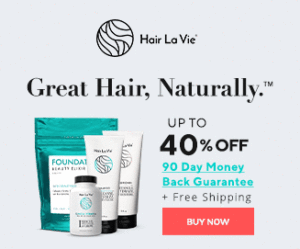A helpful guide on how to use muffin pans for cupcakes, muffins and other savory foods.
Wondering how to use your metal non-stick and silicone muffin pans for baking and cooking?
You’ve come to the right place! With helpful suggestions on how to use your muffin pan for baking muffins, cupcakes, egg cups and more, this guide is a great resource for muffin pans big and small!
Is there a difference between cupcake and muffin pans?
If you’re wondering if a cupcake pan is the same as a muffin pan, the answer is yes! Though generally called muffin pans, they can be used to bake cupcakes, muffins and even savory items, like egg cups.
How to grease a muffin pan
The easiest way to grease your muffin pan is to spray it with a non-stick vegetable spray. You can also use baking cups, which prevent your batter from sticking to the pan.
If you’d rather not use vegetable spray and you don’t have baking cups on hand, simply use a paper towel or your finger to rub some butter into each cavity. Lightly dust each cavity with flour and shake out any excess. This is especially helpful with jumbo muffin pans.
How to use a silicone muffin pan
To use a silicone muffin pan, place it on a cookie sheet (which offers added stability), and fill with your desired batter. There’s no need to grease or spray a silicone pan, as the silicone is naturally non-stick. However, you can use baking cups in a silicone pan, if you’d like.
Since silicone does not heat up like a metal pan, keep in mind that your baked goods may not brown like they would in a metal pan (but they’ll still taste delicious!). Silicone is also flexible, so your muffins and cupcakes should pop out easily.
What is a muffin top pan?
A muffin top pan allows you to make the best part of the muffin – the top! With wider cavities, this pan skips the stump and bakes a round muffin top that’s perfect for serving with tea or coffee.
Of course, the fun doesn’t have to stop there! This pan is also great for making whoopie pies, eggs, cornbread, cake layers, brownies and more.
How to make eggs in a muffin pan
You can bake eggs or cook mini quiches in your muffin pan for a quick and easy breakfast on the go! To prevent your eggs from sticking to the pan, you can use parchment paper or cupcake liners, or use a silicone pan for easier removal.
You can also use a slice of ham as your cavity liner, like in these Baked Ham and Egg Cups.
And if you’re looking for a quick and easy breakfast or brunch recipe, these Spinach and White Cheddar Egg Bites are my favorite go-to!
Can you make brownies in a cupcake pan?
You absolutely can make brownies in a cupcake pan – just keep in mind that your brownies may bake faster than if you were to bake them in a square pan.
How to make cheesecake in a cupcake pan
Both muffin pans, and mini muffin pans, are great for making cheesecake. You can make small bite-sized treats with this Salted Caramel Hot Cocoa No-Bake Cheesecake or indulge in that delicious peanut butter-chocolate combo with these Buckeye Cheesecake Bites.
How do you clean a muffin pan?
Most non-stick and silicone muffin pans are dishwasher safe; however, we suggest hand washing them in warm, soapy water for best results.
If you have stubborn bits of batter or egg on your pan, you can soak it for a few minutes in warm, soapy water before lightly scrubbing the crumbs off.
Month: August 2020
Choosing Kitchen Appliances
With so many available style, feature, quality and technology options, selecting the best appliances for your new or remodeled kitchen can be overwhelming, even if you’re working with a design or building professional. Creating a design plan and conducting informed appliance research before you start shopping can ensure that you create a stylish, functional kitchen for your family and lifestyle while remaining on budget.
Start with a Plan
Evaluating your needs and goals for your new kitchen in several key areas will help you create a realistic appliance-purchasing strategy.
Layout and Budget
Whether you’re working with an existing kitchen layout for which you need replacement appliances, remodeling to change your current design or creating your dream kitchen as part of a new construction project, the layout of your kitchen dictates a lot about the appliances you’ll need to purchase. Be sure to consider how you use your kitchen and the flow and traffic patterns it creates with adjoining rooms, as well as any architectural or structural constraints. Take a look at Common Kitchen Layouts for tips and insights on space planning — the layout you choose can either enhance or limit the types and sizes of appliances that can be accommodated. And be aware that you may have to make some compromises.
The budget you establish for your new kitchen will greatly influence the appliances you select, so it needs to be realistic for the size and scope of your project. And, as you choose appliances, be sure you or your trade professional prioritizes this established budget and function over aesthetics. For example, commercial-style appliances that are not correctly proportioned for your kitchen layout may offer the look you want but end up requiring budget-straining structural modifications that you didn’t anticipate.
Function and Lifestyle
When planning for your new kitchen, you’ll also want to take into consideration your family’s lifestyle and design it around the way you live and entertain. Be sure to make notes on not only how you currently use your kitchen but also how you might like to use it in the future. If you like to entertain, consider adding specialty appliances like a warming drawer or ice maker or installing a larger capacity oven. And busy families might want to add a speedcooking oven to save time. Drafting a comprehensive wish list will make it easier to match your needs and wants with appliance features once you start shopping.
Whether on your own or with a design professional, try to visit retailers or showrooms for product demonstrations — there’s no substitute for actually using the appliances to determine if they will be a good fit for you ergonomically or for the layout of your kitchen. For example, you may want to consider a range or oven with larger time and temperature displays, depending on the size of your kitchen. Or you may find that certain knobs, buttons and other tactical features offer greater accessibility. You can locate retailers through the manufacturers’ web sites or by using Find A Showroom. If you’re not near a retailer, your wish list will still be helpful in narrowing your search based on the features and specifications on the manufacturers’ web sites.
Style and Finishes
Once you’ve established your appliance budget and functional requirements, you can further narrow your choices by selecting the style and finishes that complement your kitchen design. In today’s luxury kitchens,stainless steel is the most popular finish option — in addition to being long-lasting and durable, stainless steel’s sleek surface is also easy to clean. Another luxury trend is integrating appliances with cabinetry using custom panels. This involves having panels custom made by a cabinet maker according to the manufacturer’s specifications.
When selecting appliances, you’ll also want to consider how their handles, knobs, touchscreens or illumination add to the overall look you want. If you’re struggling with any of these choices, try creating a mood board that integrates all the finishes you’re considering to help you visualize how they all work together.
Buy Smart
When you buy appliances, choose your retailer wisely. The sales representative you work with should be familiar with all the unique product features across multiple brands to aid you in your selection. Plus, retailers can often help with any complicated installation requirements unique to your kitchen design.
Also, knowing when and where to buy can benefit your budget — in the American retail market, for example, deep discounts can often be had as part of seasonal sales and promotions oriented around major holidays. And promotions and rebates are often available through the manufacturers’ web sites, with local dealers offering additional discounts as well.
The Coat you need – Women Wool Coat Guide
With so many different coat models offered to us women, you might find yourself, struggling with knowing which coat model to choose and how to wear it. That’s why we put together this guide for you to help to clarify some of the most common women wool coat models.
The Collarless Coat
A collarless coat is classy and timeless coat choice. It’s one of today’s dressier wool coat type and it enhances any look.
Wear it with a dress for a sophisticated style, or with a top, pants and a cardigan for a formal, yet stylish, look.
The Standup Collar Coat
A standup collar coat, also known as Funnel neck coat, is a trendy coat model. It’s the perfect choice when you want a coat that gives you extra protection and helps you stay warmer around the neck without adding a scarf.
The Pea Coat
Today’s caban jacket isn’t what it used to be. The caban jacket has become more and more popular in recent years and can be combined with almost anything thanks to its simple cut.
The Wool Trench Coat
A wool trench coat, also known as overcoat, is a warmer version of the regular trench coat. Some call it the winter version of trench coats. A wool trench coat / overcoat is long, classy and always has its signature detail – the belt. Just like a trench coat.
The Duffle Coat
The Duffle Coat a stylish, casual coat option. You will easily recognize the duffle coat by its distinctive horn toggles fastening and a hood. It’s typically short length and often seen with patched pockets. The most common, or traditional, duffle coat fabric color is khaki and brown but you should choose a fabric that fits your personal style.
The Classic Double Breasted Coat
The Double Breasted Coat is perhaps the most traditional, and slightly formal, of the coat options. Choose a grey, brown or beige fabric for a formal option. Even though this coat type is slightly more formal than the other options, it is very versatile and can be dressed up by wearing a suit underneath it, or as an everyday coat paired with jeans and cardigan.
How to Maintain Healthy Hair
To condition or not to condition, to oil or not to oil – when it comes to your hair you’ll find all kinds of advice. Mothers’ will tell you to “oil your hair” while your hair dresser will recommend the new IT thing “hair spa, Moroccan oil, strengthening not rebonding and all.” Before you pick your choice of treatment, here are a few things you must know.
The first step in hair-care is your diet and the two most important things in your diet are iron and protein. The hair cells are the fastest growing cells in the body but they are also the first ones to be affected you don’t eat right or suffer with deficiencies because they are not required for survival.
Try and include iron-rich foods like leafy vegetables, fish, pumpkin seeds, beans, chickpea, soybeans and cereals in your diet. Doctors suggest that you consume around 12 mg of iron daily. You also need protein because that’s what strengthens your hair. Include complete proteins which are also rich in amino acids: like cheese, milk, soy, lentils, peas, quinoa and yogurt.
How to Maintain Healthy Hair: A Few Basic Tips
1. It’s normal to lose 100 to 150 strands of hair a day so don’t panic when you see a small bunch crawling across your tiled floor.
2. Comb wet hair with extreme care because they’re fragile and prone to breakage. Take a broad toothed comb and run it from the roots to the ends of your hair as gently as possible.
3. Trim your hair every few weeks to get rid of those brown and rough split ends. Cut about 1/4th an inch of your hair every 6 to 8 weeks to avoid the split ends to grow out again.
4. Don’t wash your hair everyday and whenever you do, apply some conditioner on the ends. Try and use the same brand of shampoo and conditioner.
5. Rinse the conditioner off with cold water as it is good for both strength and shine.
6. Unlike the labels on the back of our food items, the labels on the back of our shampoos are mostly left unread. In the last few years, there has been a lot of focus on sulfate in shampoos. What are sulfates? They’re the reason your shampoo lathers the way it does. They clean your scalp and hair, departing the dirt from it. But some researchers also suggest that they strip your hair of essential oils. They’re also why your eye stings when shampoo runs down the side of your face. If you feel any kind of irritation on the scalp or find your hair drying up over time then try and buy a shampoo that’s sulfate-free.
7. If you’ve got dry hair then it’s best to avoid colouring. However, if you can’t resist that gorgeous shade of brown, especially under the winter sun then follow this clever advise shared on the blog. Use lemon, chamomile tea or honey as they work as great hair lighteners. You can add lemon juice to water and spray it over your hair when you’re heading out. You can rinse your hair with brewed chamomile tea after you wash them with shampoo or add honey to the water you use to wash your hair.



